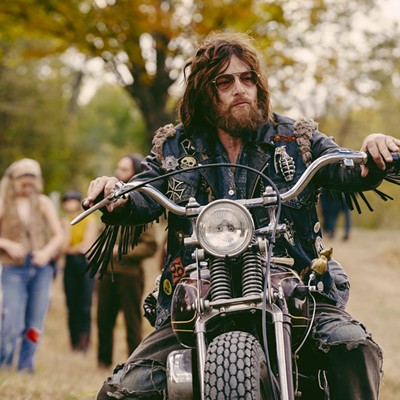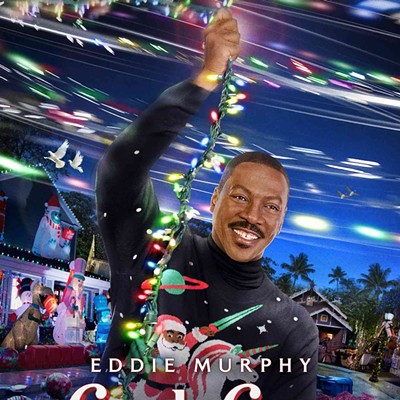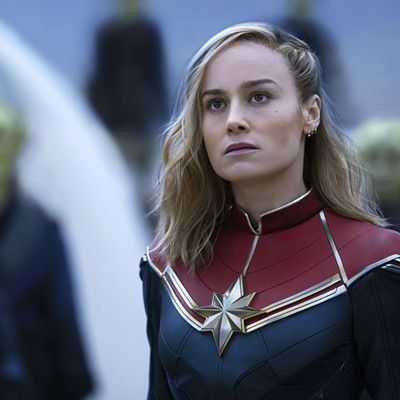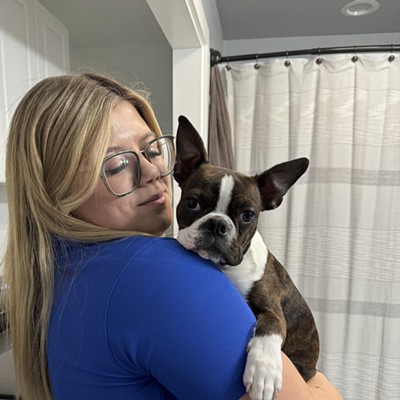Subscribe to our Events Newsletter to get the latest events, straight to your inbox.
[
{
"name": "Air - MedRect Combo - Inline Content 1",
"component": "11392278",
"insertPoint": "3",
"requiredCountToDisplay": "1",
"parentWrapperClass": "fdn-ads-inline-content-block"
},{
"name": "Air - MedRect Combo - Inline Content 2",
"component": "11392276",
"insertPoint": "7",
"requiredCountToDisplay": "5",
"parentWrapperClass": "fdn-ads-inline-content-block"
},{
"name": "Air - MedRect Combo - Inline Content 3",
"component": "11392277",
"insertPoint": "12",
"requiredCountToDisplay": "9",
"parentWrapperClass": "fdn-ads-inline-content-block"
}
]
In most of the significant animation achievements throughout film history, from Betty Boop to “Pinocchio” to “Duck Amuck” to Studio Ghibli to the best of the Pixar Animation Studios, now owned by Disney, high anxiety has run the show.
If it was good enough for the Brothers Grimm and Hans Christian Andersen, it’s surely good enough for the movies. Kill off a parent (too many stories to count), threaten a flapper with sexual assault (early 1930s Boop), quash a young protagonist’s confidence before restoring it (every animated everything, ever): It’s nerve-wracking just thinking about the real-life doubts, fears, crises, all resolved — we hope — just in time.
Pixar’s “Inside Out” (2015) leaned into old, turbulent emotions in a new way, all the way. The story dealt with 11-year-old Riley, a Minnesota girl into hockey, who relocated, uneasily, with her parents to San Francisco. A big move means big challenges for any kid — and any parent. Director Pete Docter and the “Inside Out” screenplay acknowledged Riley’s depression while underscoring her ability to manage it, and flourish. The emotions depicted in the control room of her mind — Joy, Sadness, Fear, Anger, Disgust — navigated their increasingly tricky human charge, as well as their own clashing personalities. And people went; it was a hit.
I hope the same for “Inside Out 2,” the engaging sequel that pits the now 13-year-old Riley against new challenges and a tangle of new insecurities. It’s chaotic, sometimes very funny, occasionally wrenching, and at 96 minutes, exactly one minute longer than “Inside Out.”
The human storyline is simple and sure-footed. Riley hits puberty, which hits back as puberty does. She and her besties at school are invited to a summer hockey camp, which bodes well for their self-esteem and their social futures together.
But there are new kids in town, in her mind. Emotion management center honcho Joy (Amy Poehler providing the can-do, no-problem vocal inflections once again) must accommodate these new emotions led, anxiously, by Anxiety (Maya Hawke), along with Envy (Ayo Edebiri), Embarrassment (Paul Walter Hauser) and the très French and consistently witty embodiment of Ennui (Adèle Exarchopoulos, plumbing heretofore unplumbed depths of disaffected disengagement). Nostalgia pops in for a couple of appearances; June Squibb voices her, unerringly.
Riley piles up a stack of rapidly accumulated wince-worthy memories along with many good ones as she ingratiates herself with the cool older girls at the camp. She feels as if she cannot win this phase of her life. How to reconcile one established friend group with a longed-for new and cooler and slightly older one? Gradually, Riley’s innate good-heartedness gets sidelined while new, edgier, arguably meaner personality traits muscle in on the action. Anxiety becomes a huge presence in her summer of emotional riddles, just as it dominates the screenplay by Meg LeFauve (who co-wrote the first “Inside Out”) and Dave Holstein.
Anxiety’s on-screen presence is a lot. Too much? Maybe. How to vary these escalating scenes focused on a character, a feeling, who’s not quite an antagonist, but not a hero? These challenges have been acknowledged by the film’s creatives.
They didn’t solve everything, to be sure. Like most sequels to Pixar’s very good or great films, this one’s sometimes busy to a fault, and little monomaniacal in its pacing. But we’re are a long way here from the mechanical likes of “Monsters University” or “Cars 2.” “Inside Out 2” still feels human-made, and genuinely concerned about how Riley deals with this chapter of her life. The wordplay remains tiptop, as when Joy and company face a dangerous river crossing (memory bubbles substituting for water) known as the Sar-Chasm, which renders everyone’s expressed thoughts, sincere or not, in a jaded, “as if!” tone of adolescent dismissal.
Crucially, Phyllis Smith returns as the measured, morose voice of Sadness, alongside some new voices for familiar characters (Tony Hale in for Bill Hader as Fear; Liza Lapira in for Mindy Kaling as Disgust; Kensington Tallman replacing Kaitlyn Dias as Riley). The new emotions come from the first film’s developmental long list of possibilities. I love how Pixar, at its corporately owned peak, invested millions of dollars in figuring out how to wrangle some peculiar, hard-to-market narratives into workable shape. Even if “Inside Out 2” sometimes favors speed over, well, everything else, it’s gratifying to see an ordinary and, yes, anxious 13-year-old’s life, like millions and millions of lives right now, treated as plenty for a good, solid sequel, and without the dubious dramatics of the first movie’s climax.
What’s happening on the inside can be enough.
Phillips reviews movies for The Chicago Tribune.
If it was good enough for the Brothers Grimm and Hans Christian Andersen, it’s surely good enough for the movies. Kill off a parent (too many stories to count), threaten a flapper with sexual assault (early 1930s Boop), quash a young protagonist’s confidence before restoring it (every animated everything, ever): It’s nerve-wracking just thinking about the real-life doubts, fears, crises, all resolved — we hope — just in time.
Pixar’s “Inside Out” (2015) leaned into old, turbulent emotions in a new way, all the way. The story dealt with 11-year-old Riley, a Minnesota girl into hockey, who relocated, uneasily, with her parents to San Francisco. A big move means big challenges for any kid — and any parent. Director Pete Docter and the “Inside Out” screenplay acknowledged Riley’s depression while underscoring her ability to manage it, and flourish. The emotions depicted in the control room of her mind — Joy, Sadness, Fear, Anger, Disgust — navigated their increasingly tricky human charge, as well as their own clashing personalities. And people went; it was a hit.
I hope the same for “Inside Out 2,” the engaging sequel that pits the now 13-year-old Riley against new challenges and a tangle of new insecurities. It’s chaotic, sometimes very funny, occasionally wrenching, and at 96 minutes, exactly one minute longer than “Inside Out.”
The human storyline is simple and sure-footed. Riley hits puberty, which hits back as puberty does. She and her besties at school are invited to a summer hockey camp, which bodes well for their self-esteem and their social futures together.
But there are new kids in town, in her mind. Emotion management center honcho Joy (Amy Poehler providing the can-do, no-problem vocal inflections once again) must accommodate these new emotions led, anxiously, by Anxiety (Maya Hawke), along with Envy (Ayo Edebiri), Embarrassment (Paul Walter Hauser) and the très French and consistently witty embodiment of Ennui (Adèle Exarchopoulos, plumbing heretofore unplumbed depths of disaffected disengagement). Nostalgia pops in for a couple of appearances; June Squibb voices her, unerringly.
Riley piles up a stack of rapidly accumulated wince-worthy memories along with many good ones as she ingratiates herself with the cool older girls at the camp. She feels as if she cannot win this phase of her life. How to reconcile one established friend group with a longed-for new and cooler and slightly older one? Gradually, Riley’s innate good-heartedness gets sidelined while new, edgier, arguably meaner personality traits muscle in on the action. Anxiety becomes a huge presence in her summer of emotional riddles, just as it dominates the screenplay by Meg LeFauve (who co-wrote the first “Inside Out”) and Dave Holstein.
Anxiety’s on-screen presence is a lot. Too much? Maybe. How to vary these escalating scenes focused on a character, a feeling, who’s not quite an antagonist, but not a hero? These challenges have been acknowledged by the film’s creatives.
They didn’t solve everything, to be sure. Like most sequels to Pixar’s very good or great films, this one’s sometimes busy to a fault, and little monomaniacal in its pacing. But we’re are a long way here from the mechanical likes of “Monsters University” or “Cars 2.” “Inside Out 2” still feels human-made, and genuinely concerned about how Riley deals with this chapter of her life. The wordplay remains tiptop, as when Joy and company face a dangerous river crossing (memory bubbles substituting for water) known as the Sar-Chasm, which renders everyone’s expressed thoughts, sincere or not, in a jaded, “as if!” tone of adolescent dismissal.
Crucially, Phyllis Smith returns as the measured, morose voice of Sadness, alongside some new voices for familiar characters (Tony Hale in for Bill Hader as Fear; Liza Lapira in for Mindy Kaling as Disgust; Kensington Tallman replacing Kaitlyn Dias as Riley). The new emotions come from the first film’s developmental long list of possibilities. I love how Pixar, at its corporately owned peak, invested millions of dollars in figuring out how to wrangle some peculiar, hard-to-market narratives into workable shape. Even if “Inside Out 2” sometimes favors speed over, well, everything else, it’s gratifying to see an ordinary and, yes, anxious 13-year-old’s life, like millions and millions of lives right now, treated as plenty for a good, solid sequel, and without the dubious dramatics of the first movie’s climax.
What’s happening on the inside can be enough.
Phillips reviews movies for The Chicago Tribune.





















